(i) Electroscope:
Purpose: A device used to detect electric charge.
How It Works: It consists of a jar, a cardboard lid with a hole, a paper clip, and two aluminium foil strips. When a charged object is brought near, the foil strips repel each other, indicating the presence of charge.
Charging and Discharging:
Charging: When a charged object touches the paper clip, it transfers charge to the foil strips, causing them to repel each other.
Discharging: Touching the paper clip with your hand causes the foil strips to collapse because the charge is transferred to the ground through your body.
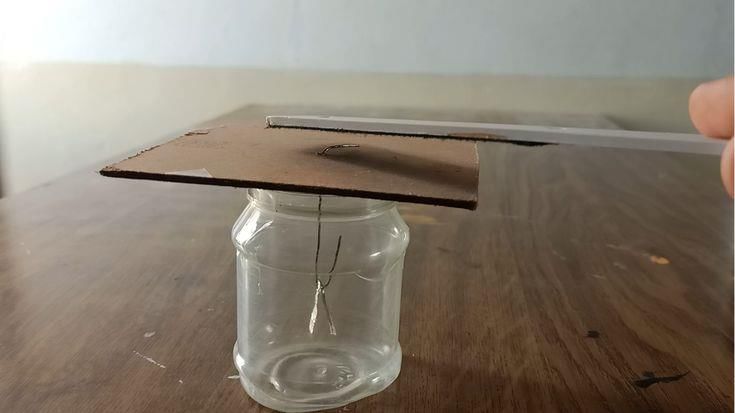
(ii) Earthing:The process of transferring excess charge safely to the earth. Earthing in buildings protects against electrical shocks by grounding stray electrical currents.
The story of lightning
- Air Currents and Water Droplets:
- In a thunderstorm, the air moves upward while the water droplets fall down.
- This movement causes a mix-up of electric charges.
Separation of Charges:
- During these strong movements, positive and negative charges separate.
- Positive Charges: These gather at the top of the clouds.
- Negative Charges: These collect at the bottom of the clouds.
- Additionally, positive charges build up near the ground.
Building Up of Charges:
- As more charges gather, they create a strong electric field.
- Normally, air does not conduct electricity well, but when the charge is very high, the air can no longer stop the flow of electricity.
Electric Discharge:
- When the negative charges from the clouds meet the positive charges from the ground, they create a sudden release of energy.
- This release of energy is what we see as lightning.
- The bright flash of light and the sound we hear (thunder) are both results of this electric discharge.

Lightning Safety
- During lightning and thunderstorm no open place is safe.
- Hearing thunder is an alert to rush to a safer place.
- After hearing the last thunder, wait for some time before coming out of the safe place.
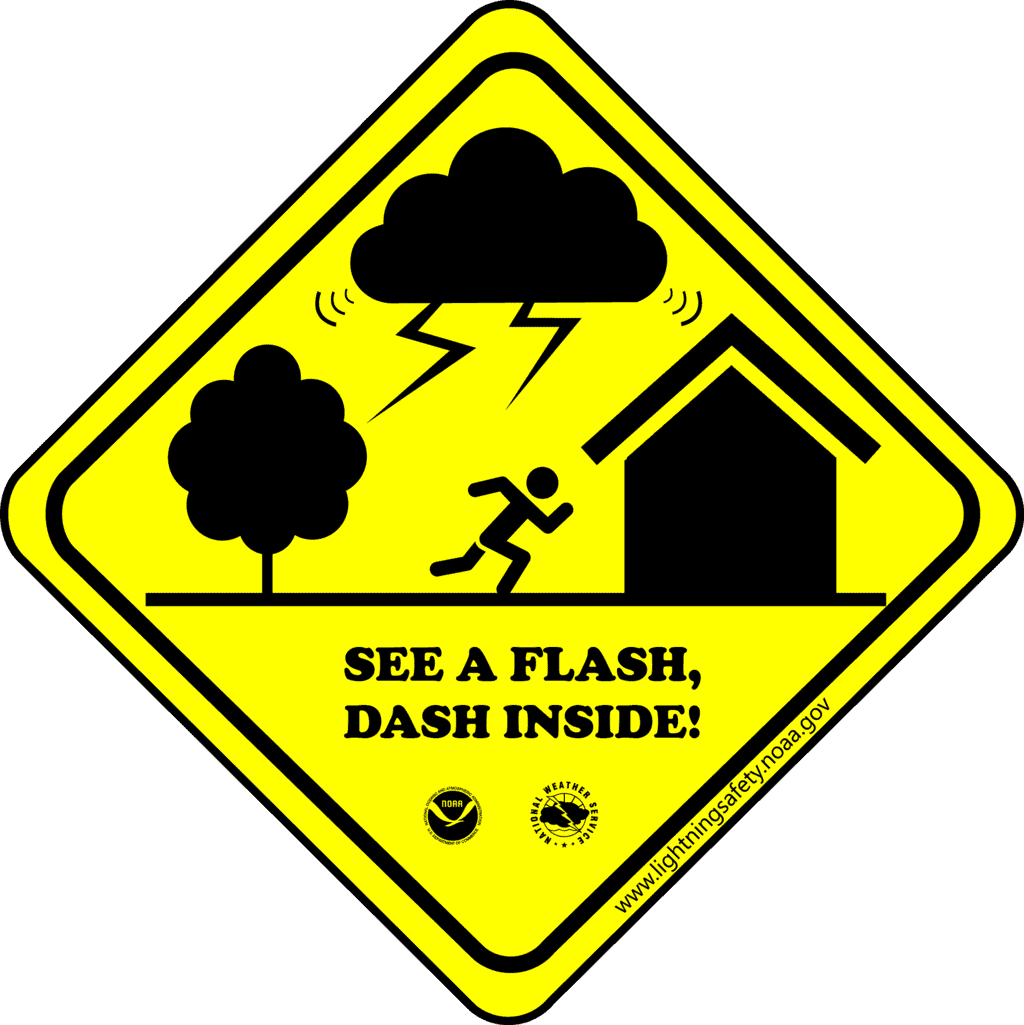
Finding a Safe Place
- A house or a building provides a safe environment.
- When you are traveling in a car or a bus, you are protected inside as long as the windows and doors are closed.
Dos and Don’ts during a Thunderstorm:
Outside:
- Open vehicles, such as motorbikes, tractors, and convertibles, are not safe during storms.
- Open areas, tall trees, and park shelters do not offer protection from lightning strikes.
- Bringing an umbrella is not a wise choice during thunderstorms.
- If you find yourself in a forest, seek shelter under shorter trees. If no cover is available and you're in an open field, stay away from all trees.
- Maintain a distance from poles and other metal objects.
- Do not lie flat on the ground. Instead, squat low on the ground.
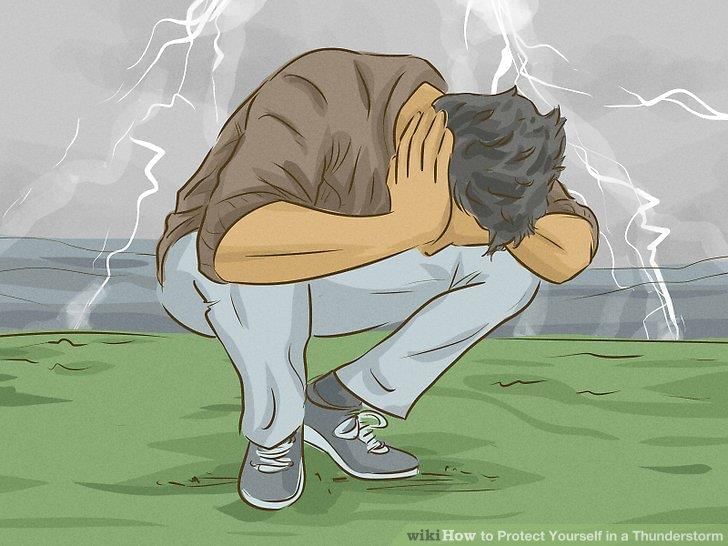
Inside the House:
- Lightning can hit telephone wires, electrical cords, and metal pipes. It's best to stay away from these during a thunderstorm.
- Using mobile phones and cordless phones is a safer choice.
- Avoid bathing during thunderstorms to prevent contact with water that is running.
- Unplug electrical appliances like computers and televisions.
- You can keep lights on during a storm.
Lightning Conductors
- Lightning Conductor is a device designed to protect buildings from lightning.
- A metal rod, which is taller than the building, is installed in the walls during construction.
- One end of the rod is exposed to the air, while the other end is buried deep in the ground.
- The rod serves as an easy path for the electric charge to flow into the ground.
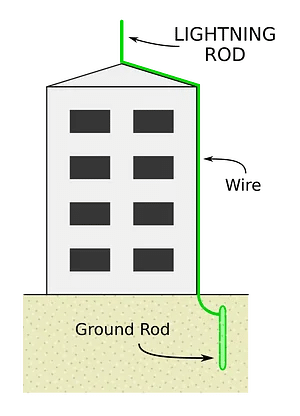
- The metal columns used in building construction, along with electrical wires and water pipes, provide some level of protection for us. However, it is crucial to avoid touching them during a thunderstorm.
- You may see trident-shaped iron rods on the tops of temples, TV towers, and cell phone towers. These rods serve as lightning conductors.
Earthquakes
- Thunderstorms and lightning can cause significant damage but can be somewhat predicted by the weather department.
- Thunderstorms may lead to lightning and cyclones, giving time for protective measures.
- Earthquakes, however, remain unpredictable and can cause widespread destruction.
- Notable earthquakes in India include the 2005 North Kashmir quake and the 2001 Bhuj quake in Gujarat.
What is an Earthquake?
An earthquake is a sudden shaking or trembling of the earth lasting for a very short time.

- Earthquakes are caused by disruptions deep within the Earth's crust.
- They happen all over the world and often go unnoticed.
- Major earthquakes are much less common than smaller ones.
- These events can lead to serious damage to buildings, bridges, dams, and people.
- There can be significant loss of life and property due to earthquakes.
- Earthquakes may also trigger floods, landslides, and tsunamis.
What Causes an Earthquake?
Earthquakes are natural disasters that occur when there is a sudden shaking or movement of the ground. In the past, people did not understand what caused these earthquakes, so they made up stories to explain them. For example, Boojho's grandmother told a mythical story about how earthquakes happen. Similar stories were told in different parts of the world.
Now, we know that earthquakes are caused by disturbances deep inside the Earth's outer layer, which is called the crust. Structure of Earth
Structure of Earth
 Movement of Earth's PlateWhen this happens, it causes a disturbance in the crust, and this disturbance is what we feel as an earthquake on the surface.
Movement of Earth's PlateWhen this happens, it causes a disturbance in the crust, and this disturbance is what we feel as an earthquake on the surface.Even though we understand what causes earthquakes, we still cannot predict exactly when and where the next one will happen.
Causes of Earthquakes
- Movement of Earth’s Plates: Most earthquakes are caused by thee movement of the Earth's plates. These plates are constantly moving, and when they interact with each other, it can cause disturbances in the crust.
- Volcanic Eruptions: Earthquakes can also be triggered by volcanic eruptions. When a volcano erupts, it can cause the ground to shake and create tremors.
- Meteor Impacts: If a meteor hits the Earth, it can cause a significant disturbance and result in an earthquake.
- Underground Nuclear Explosions: Explosions carried out underground, such as nuclear explosions, can also cause tremors and earthquakes.
Seismic Zones
The boundaries between these plates are known as weak zones, where earthquakes are more likely to occur. These weak zones are also called seismic or fault zones. In India, there are several areas that are at a higher risk of experiencing earthquakes. Some areas in India that are at risk of earthquakes are:
- Kashmir
- Western and Central Himalayas
- North-East India
- Rann of Kutch
- Rajasthan
- Indo–Gangetic Plain
- Some areas in South India
Measuring Earthquake Power
The strength or power of an earthquake is measured using a scale called the Richter scale. This scale indicates the magnitude of the earthquake. Earthquakes that are very destructive usually have a magnitude higher than 7 on this scale. For example, the earthquakes in Bhuj and Kashmir had magnitudes greater than 7.5, indicating their severe impact.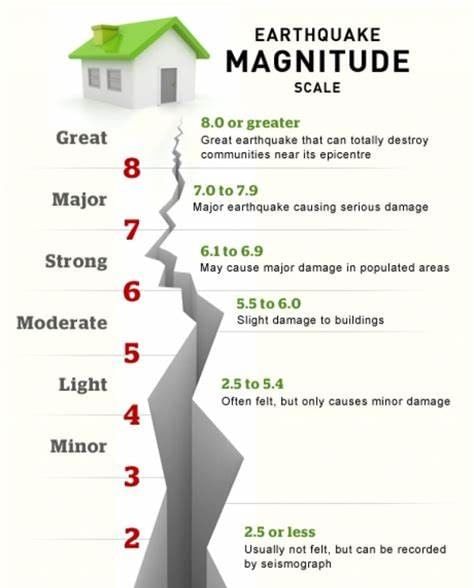






 Richter Scale:
Richter Scale:



















